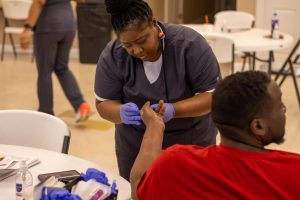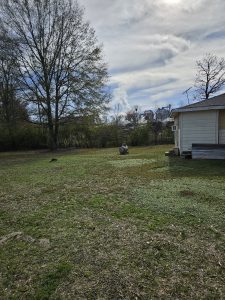Indigenous Peoples’ Day (Oct. 9, 2023) originated in Berkeley, California, in 1992. It occurred on the 500th anniversary of Christopher Columbus’ arrival in what was eventually called the Americas. It is celebrated on the second Monday of October.
As it was originally designed, its aim was to counter the idea that Columbus “discovered” America. For many Native or Indigenous people, that event marked the beginning of their decline if not demise as a people.
Since 1992, however, the idea has broadened in its scope and the celebration has spread across the country. More than just countering the Columbus myth, Indigenous Peoples’ Day has grown to celebrate the history and culture of America’s indigenous people. This means that the history of the people must now include their development and their achievements centuries before the arrival of the Europeans. It means that their culture and anthropological evolution must be included in the celebrations.
Most Americans have no idea of the genius and diversity that existed among these first Americans. It is far past time that this absence should be remedied.
With those realities in mind, most Americans will need to re-adjust their understanding of America’s beginning. America did not begin when the European settlers declared themselves independent from England in 1776. It did not even begin in 1619 with the arrival of the African people who, along with early Native people, were forced to serve as slaves for the profits of those who had “invested” in the various cash crops and industries created on this continent. America began with the arrival of the indigenous people around 28000 B.C. From that point forward, the things done by and to the Native people should be recorded, taught, and remembered as integral parts of America’s history.
Although the major story is not the attempt to enslave the Native peoples, the seizing of their land and the attempt at their physical and cultural genocide should not be omitted or glossed over. These acts represent a major step in destroying their power, glory, and way of life.
The curriculum or subject matter for understanding Native peoples’ interaction with the European Americans must include the following:
(1) The fact that various writers have recorded more than 500 treaties signed with Native Americans by the Europeans and Americans, with each one being broken as the white settlers desired more and more land;
(2) The reality that the oft-quoted phrase of white men in western movies, “the only good Indian is a dead Indian” was an actual call to action until the so-called “manifest destiny” was fulfilled;
(3) The infamous “trail of tears” episode and President Andrew Jackson’s defiance of the Supreme Court decision that triggered the event;
(4) The Massacre at Wounded Knee and other lesser known places;
(5) Thee attempt to destroy the “Indian-ness” of the young Native Americans in mission and other American schools; and
(6) The corralling of most Indian tribes onto reservations, which often consisted of land with fewer resources and less possibility for the development of wealth.
As preceding examples of white nationalism unfolded, history also records some of the cooperative things shared by Native Americans and African Americans. Realizing their common oppressed condition, Native and African people engaged in at least the following.
(1) In 1526, Native Americans and African Americans combined their forces and overthrew the Spanish colonizers, freeing themselves and proceeded to live together as liberated peoples.
(2) In the Spanish Territory of Florida, Africans and Native people joined together, forming the Seminole tribe. They fought against the re-enslavement of African people who had escaped. As a result of their wars with America, many eventually ended up in Mexico, the Bahamas, and elsewhere as fully liberated people. Some of them, however, were relocated to Oklahoma.
(3) Throughout the sojourn of Native and African people in America, thousands intermarried and developed families, so much so until many of the forced settlers in the Oklahoma Territory were/are not separately distinguishable.
(4) There are many other scattered pieces of evidence showing cooperative efforts between Black and Indian people, down to and including the Poor Peoples March on Washington and the activism of the American Indian Movement in the 1960s and 70s. For these kinds of efforts, it is easy to see why African Americans should appreciate and join-in celebrating Indigenous Peoples’ Day.
On the other side of the spectrum, many white nationalists who realized the likelihood of cooperation among Native and African people, initiated efforts to drive a wedge between them. One example was the idea of honoring certain tribes as “civilized nations.” These included the Creeks, Cherokees, Chickasaws, Choctaws, and Seminoles. They were favored because they had more readily assimilated with white culture and society, including the idea of holding Africans as slaves. (The effort apparently did not work very well among the Seminoles.)
Another example of the effort to drive a wedge between Native and African people was the use of Black soldiers to fight against Native peoples on the plains. These “Buffalo Soldiers” generally served from the end of the Civil War until the last tribes were subdued. Then there are the ongoing efforts of white supremacists to denigrate Black people in the eyes of every other ethnic group, including Native or indigenous people.
Despite those efforts, however, the two historically oppressed groups – Native and African – have continued in every generation to find common ground for struggle against white supremacy. The celebration of Indigenous Peoples’ Day can most certainly grow that phenomenon. white supremacy and white nationalism make the effort not only necessary, but for the objective observer, inevitable.
The music group Redbone may not be the only ones to say it, but they were on point regarding Native or Indigenous people when they said, “We were all wounded at Wounded Knee.” Their cry is but another expression of what Billie Holliday illuminated in “Strange Fruit” and Claude McKay trumpeted in “If We Must Die” regarding African people in America.







